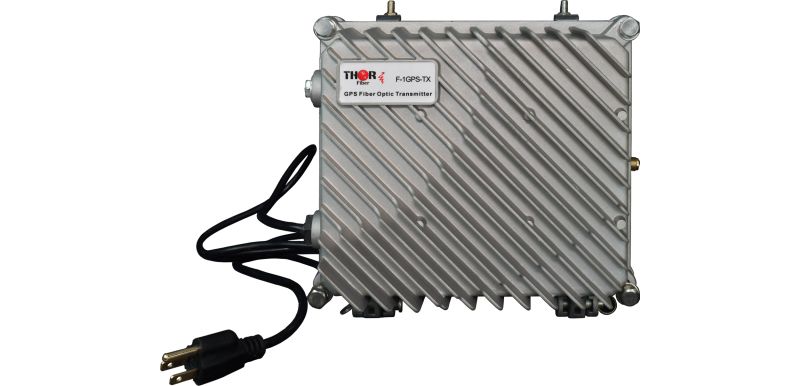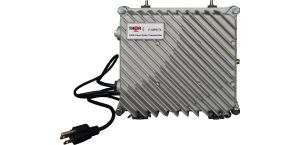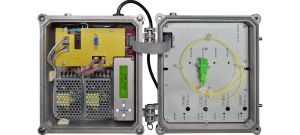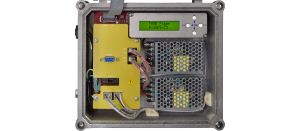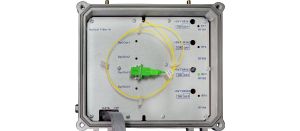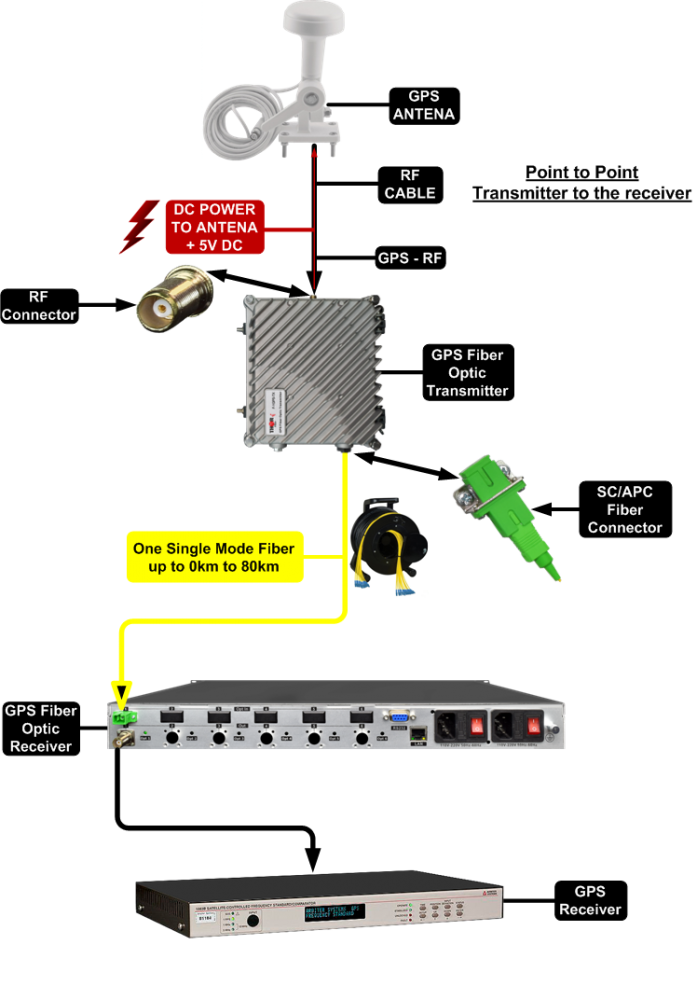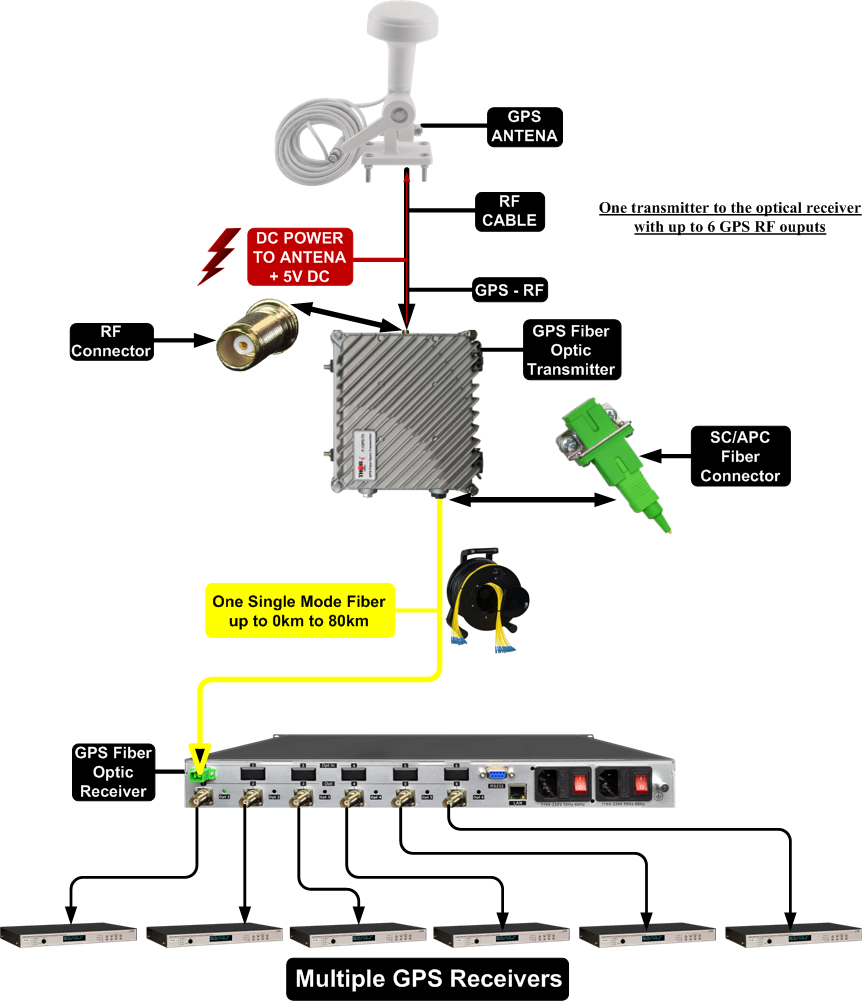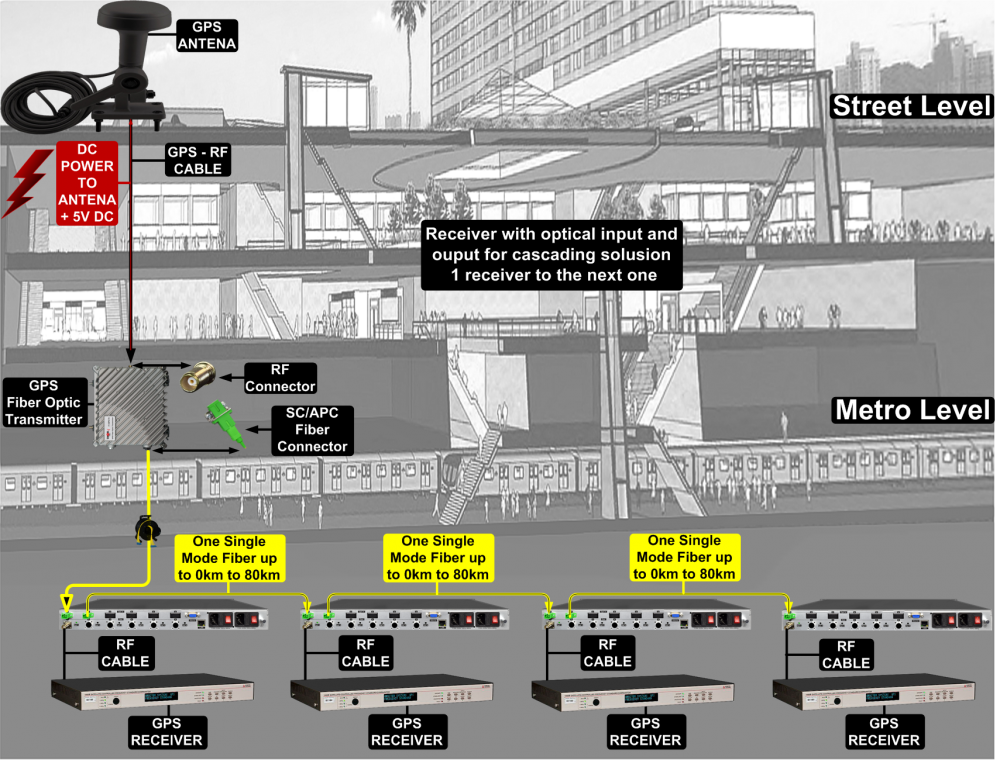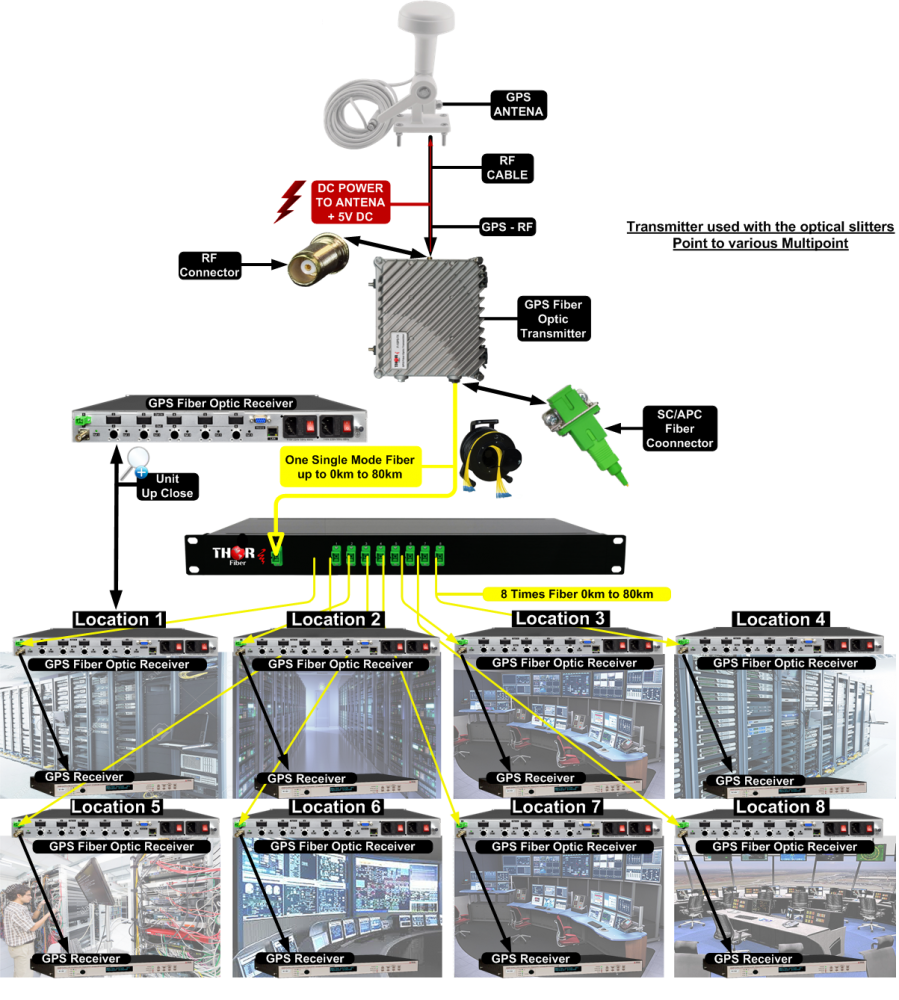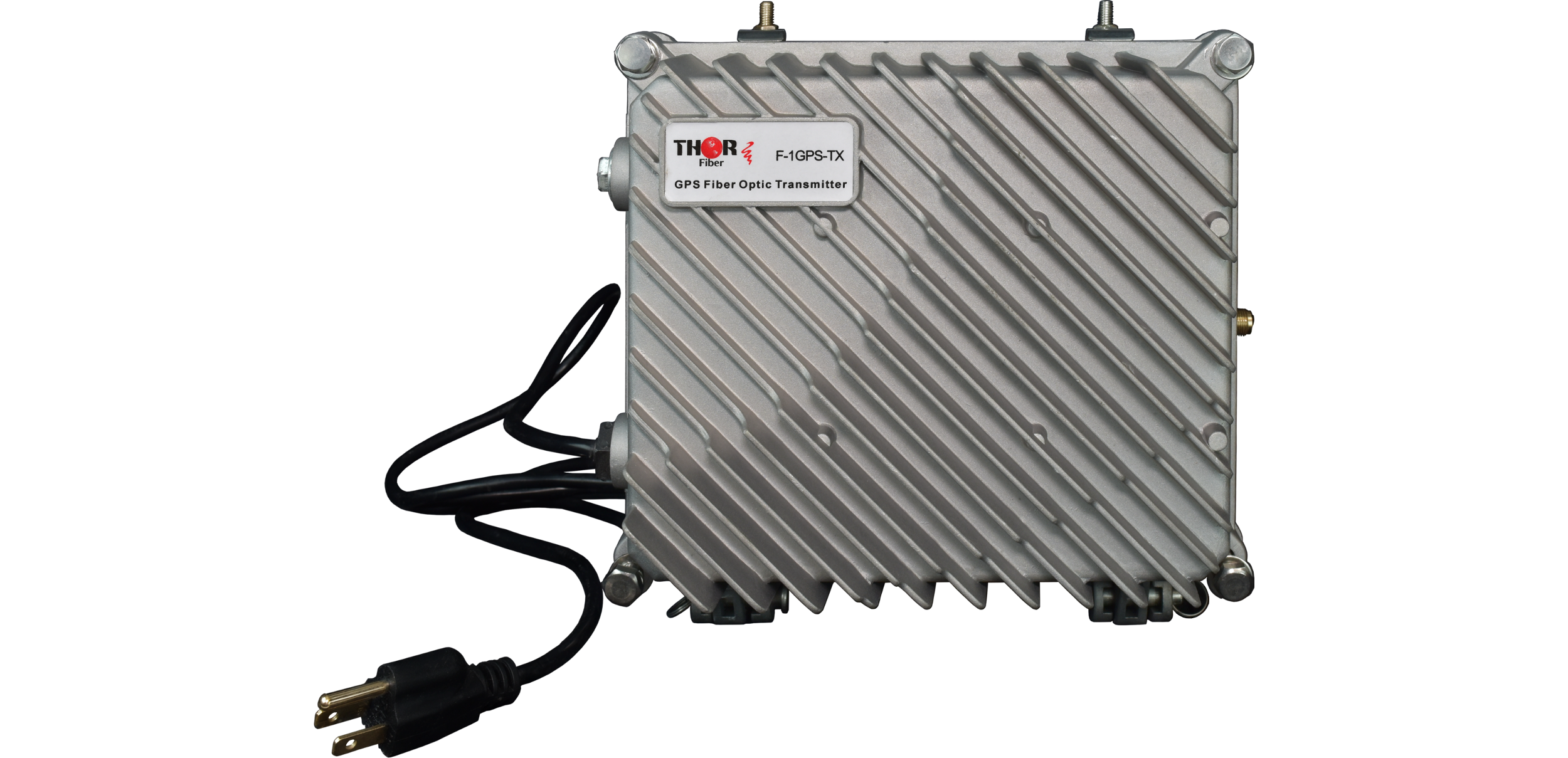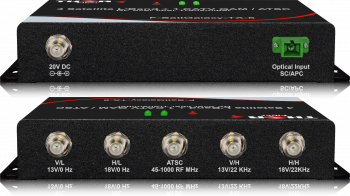Answer: Our GPS over fiber optic transmitter and receiver F-1GPS-TX/RX or Lband F-LBAND-TX/RX support frequencies ranging from 54-2600 MHz. It is protocol-independent, so it does not measure the modulation in use but rather the band spectrum.
After conducting some research, I found that the MUOS system uses a narrowband waveform operating at a frequency of 300-320 MHz and a wideband waveform operating at a frequency of 1200-1300 MHz.
The narrowband waveform offers voice and low data rate communications, while the wideband waveform offers high data rate communications for video and large file transfers. Therefore, our GPS over fiber optic transmitter and receiver should work with the MUOS system.
F-1GPS-TX/RX
Another thing that needs to be checked is the RF power. Our RF transmitter requires an input of 10-25 dBmV, with the same corresponding output on the receiver.
Since the MUOS system is bi-directional, you would need to use two sets of the TX/RX's and use them in reverse over 2 fibers. Most likely, you would need to use a circulator or duplexer between TX and RX to avoid signal loop.
In summary, the devices should work if the RF frequency and RF power are in the range.
The MUOS waveform is a satellite communications waveform developed for use by the United States Department of Defense's (DoD) Mobile User Objective System (MUOS). The MUOS waveform provides advanced voice, data, and video communications capabilities to mobile and tactical users worldwide. It is designed to provide enhanced communication capabilities to military users in remote or difficult-to-reach locations, such as ships, aircraft, and land-based vehicles. The waveform is designed to operate in multiple frequency bands and offer features such as anti-jamming, low probability of detection, and enhanced security.
The MUOS (Mobile User Objective System) waveform operates in the Ultra High Frequency (UHF) band, specifically in the range of 300 MHz to 3 GHz. The MUOS system uses five geostationary satellites to provide global coverage.
The MUOS system has a narrowband waveform that operates at a frequency of 300-320 MHz and a wideband waveform that operates at a frequency of 1200-1300 MHz. The narrowband waveform offers voice and low data rate communications, while the wideband waveform offers high data rate communications for video and large file transfers.
The MUOS system uses a frequency division multiple access (FDMA) technique, which allows multiple users to share the same frequency band by dividing the band into smaller sub-channels. This helps to increase the efficiency of the system and reduce interference between users.
It is bi-directional, meaning that it supports two-way communication. This allows users to not only receive information but also to transmit information back to the network. The bi-directional capability is essential for military operations as it enables troops to communicate and exchange information in real-time, which is critical for mission success.
The MUOS (Mobile User Objective System) waveform uses a 50-ohm impedance antenna. This is the standard impedance used for most UHF communications systems, including military and commercial systems. A 50-ohm impedance is commonly used because it provides an optimal match between the antenna and the transmitter or receiver, minimizing signal reflections and maximizing signal efficiency. The use of a 50-ohm impedance antenna helps to ensure that the MUOS system can operate efficiently and effectively, providing reliable communications for military users in remote or difficult-to-reach locations.

 ES
ES


